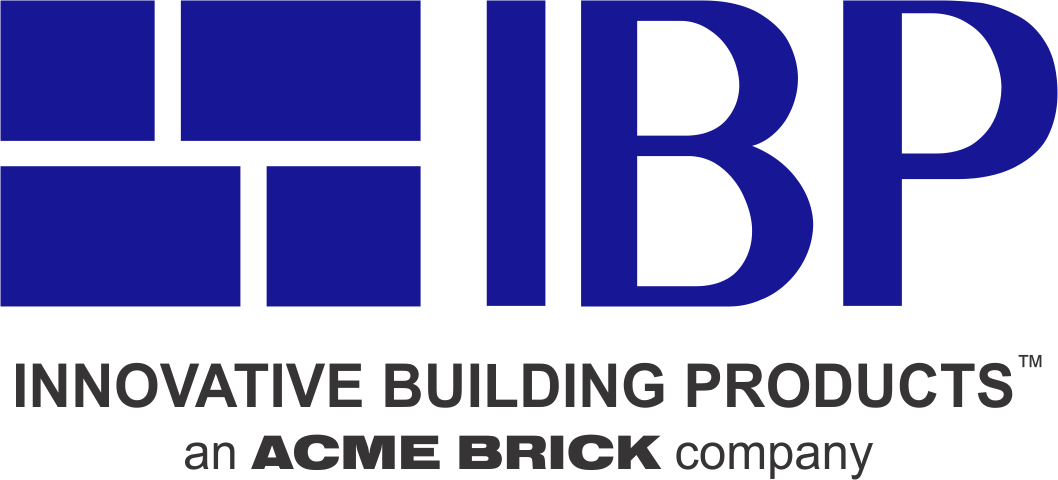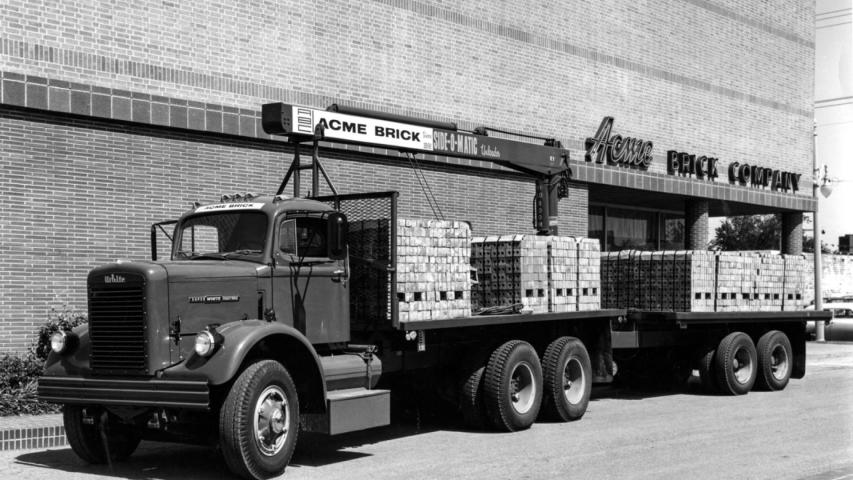On April 17, 1891, businessman George E. Bennett chartered a company known as the Acme Pressed Brick Company. But not even a visionary like Bennet could image what was to come. By the mid-20th century, his company --- since renamed Acme Brick --- would become the largest American-owned brick manufacturer.
Of course, brick has been around for centuries. Humans have used brick to build long-lasting structures for thousands of years. According to this source, “Brick dates back to 7000 B.C., which makes them the oldest known building materials. They were discovered in southern Turkey at the site of an ancient settlement around the city of Jericho. The greatest breakthrough came with the invention of fired brick around 3500 B.C. From this moment on, brick could be made without the heat of the sun.”
Happy Birthday to Acme Brick! The company celebrated 132 years in business on April 17, 2023.
Nine People Who Built This House of Brick
Since its formation, Acme Brick has not only seen many changes in the brick and construction industries, but it has often led the charge --- beginning with its founder.
George Bennett was a merchant in Dallas who founded Acme Brick in 1891. He was a classic entrepreneur who recognized a growing demand for construction materials in his native state, where people were moving out of the frontier state and building new cities. Log cabins would no longer satisfy home and business owners!
After finding and successfully testing raw materials such as clay and shale, which were found about 50 miles west of Fort Worth, and conceiving a business plan that considered such factors as a labor force and railroad transportation for the finished product, Bennett chartered Acme Pressed Brick Company and began a journey that continues to this day.
No matter how great a product is, long-term success is only possible when someone has the temerity to get out there in the market and sell it! In 1910, after an international economic panic crippled construction and caused Acme Brick to curtail production and lay off workers, Ernest Fender (page 20) was the right man at the right time. He was a relentless salesman, and when he heard that the city of Midland, Texas had been all but destroyed by a massive fire, he jumped on the next train smokin’ West. He managed to sell enough brick to save the company and was rightfully promoted to lead the company’s first sales department.
John Justin Jr. found a commonality between boots and brick. In the process, he became the president and CEO of Acme Brick’s parent company. Based on his experience in his family’s boot manufacturing business, he realized that brick, like boots, was purchased by customers based on color, texture, and in-person sales presentations. Over the three years of his role as president of the company, Justin learned valuable lessons about brick manufacturing and used these to help the company transition to even greater success.
Ed Stout (page 74) enjoyed the single-longest tenure of any president of Acme Brick (1973–1999), and he made several operational decisions that dramatically enhanced the company’s future growth. At the very beginning of his leadership, an oil embargo by OPEC caused chaos among manufacturing industries that relied on oil and natural gas to make products. Since brick is fired by natural gas, this was potentially a death knell for Acme Brick. Stout began investing in natural gas exploration, which paid off handsomely when Congress began deregulating natural gas exploration and drilling. Led by Stout, the company also reduced its gas consumption per brick by a whopping 40 percent.
Investors worldwide know who the “Oracle of Omaha” is. Warren Buffett’s decision to add Acme Brick Company to his Berkshire Hathaway portfolio followed his typical acquisition strategy: to invest only in companies and products that the average person can understand. There’s an excellent possibility that these companies are a part of almost everyone’s day: Burlington Northern, Coke, GEICO, American Express, Gillette, Acme Brick, and many others.
Harrold Melton (Ph.D.) (page 102) could have easily been a tenured professor at any university, except for one fact: He loved brick. He originally joined Acme Brick in 1958, and it was obvious to company leaders and colleagues that he was a brilliant salesman. After leading sales efforts in several Acme districts, he returned to college and earned his doctorate. However, remembering the sound of brick being stacked and shipped, along with an offer to become Acme Brick’s vice president of sales, lured him back to the company. He established the Acme marketing department, which helped Acme gain powerful name recognition. After being named president of the company in 1999, he helped establish the relationship with Berkshire Hathaway.
When Dennis Knautz was named CEO, he got first-hand experience of just how hot one of the company’s kilns can feel! His “trial by fire” occurred three years after assuming his new role in 2008. It was the “Great Recession,” fueled by lax subprime mortgage standards and escalating energy prices, that pushed the United States into the worst economic crisis since the Great Depression. The ensuing housing collapse forced Acme Brick Company to reduce production at almost all its plants, lay off workers, and lose money for the first time in the company’s history. This continued for five tough years. Through the chaos, Knautz guided the company with a steady hand, and when it came out on the other side, it was stronger and ready to take on new challenges.
After playing college football for UCLA, Troy Aikman was selected first overall by the Dallas Cowboys in the 1989 NFL Draft. He was named to six Pro Bowls during his career while helping lead Dallas to a period of dominance in the 1990s. The longest-tenured quarterback in Cowboys franchise history, Aikman won three Super Bowl titles with the team, and he was inducted into the Pro Football Hall of Fame in 2006. During the 1990s, Aikman was featured as the primary spokesman for Acme Brick and is given credit for dramatically increasing the name recognition of the company throughout the United States.
Runners on base soon learned that catcher Ivan (Pudge) Rodriguez had one of the best arms in the league. This made him an excellent pitchman for Acme Brick! Pudge played for the Texas Rangers in two separate stints, comprising the majority of his career (Florida Marlins, Detroit Tigers, New York Yankees, Houston Astros, and Washington Nationals).
The architects, builders, and designers who have chosen Acme Brick for their customers for more than 130 years are the real heroes of this American success story. Click here for product information on Acme Brick.
Four Technical and Business Advances That Fired Acme Success
Through good times and tough times, Acme Brick has used technical and business innovations to drive success. Here are four that have had the biggest impact on the company’s longevity.
The Boyd Press (page 12)
Whether they had two, four, or six molds, these presses took the raw material (clay and shale) and gave the brick its shape. These bricks were then transported to the kiln where they were heated at a remarkably high temperature. In the early days of Acme Brick, the Boyd Press was responsible for substantially increasing productivity.
The Tunnel Kiln
According to several sources, a tunnel kiln is a continuous moving ware kiln in which the clay products to be fired are passed (on cars) through a long horizontal tunnel. The firing of products occurs at the central part of the tunnel. The primary advantages of tunnel kiln technology lie in its ability to fire a wide variety of clay products more efficiently. The tunnel kiln technology was developed around the mid-19th century.
Natural Gas Fired Kiln
Until the late 19th century, only solid fuels such as wood and coal were available. In kilns fired with solid fuels, the unburned ash residue must constantly be removed. Now, most fuel-burning kilns (including the Acme Brick plants) are fueled with a liquid such as oil or a gaseous fuel such as natural gas or propane.
Joining the Berkshire Hathaway Portfolio
The stock price for a Class A share of Berkshire Hathaway is about a half million dollars in 2023. It is a multinational conglomerate based in Omaha, Nebraska, and is led by Warren Buffett, one of the most successful investors in history. When Acme Brick joined this portfolio, it gained access to equity capital and some of the smartest minds in business today.
Iconic Structures Built With Acme Brick
Over the past 130 years, hundreds of thousands of homes have been constructed of brick made at Acme Brick plants. Each is the most important “building” for the families who live there. In addition to these homes, there are many other structures that have a timeless look and permanence. Here are some of them.
College Campuses
Acme Brick can be found on college campuses around the country in the form of sports stadia, classrooms, and other iconic buildings. These include:
· Texas A&M University
· The University of Texas at Austin
· Texas Christian University
· Baylor University
· Oklahoma University
· Oklahoma State University
· Texas Tech University
· Southern Methodist University
· Florida State University
The Burk Burnett Building in Fort Worth, Texas- Built in 1914 (page 127)
Will Rogers Memorial Center in Fort Worth, Texas- Built in 1936
The Adolphus Hotel in Dallas, Texas- Built in 1912
Globe Life Field -Texas Rangers Stadium in Arlington, Texas- Built in 2019
Dickies Arena in Fort Worth, Texas- Built in 2014
The Gulf Building in Houston, Texas- Built in 1929
A Glorious Past and an Exciting Future
It’s true what former President Teddy Roosevelt said about the past:
The more you know about the past, the better prepared you are for the future.
The “first” 132 years of the Acme Brick story have been a wild ride for everyone who jumped on! With new products being added, a group of associates who build value for the company every working day, and a business strategy that has been fired at 2000 degrees, Acme Brick is prepared for the future because it knows its past.
Learn more about the history of Acme Brick.

